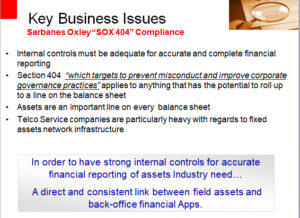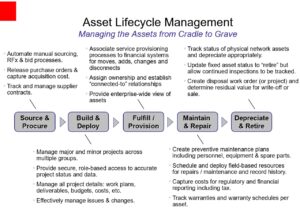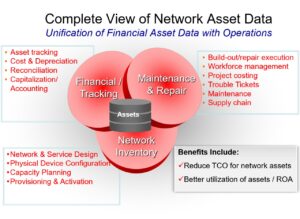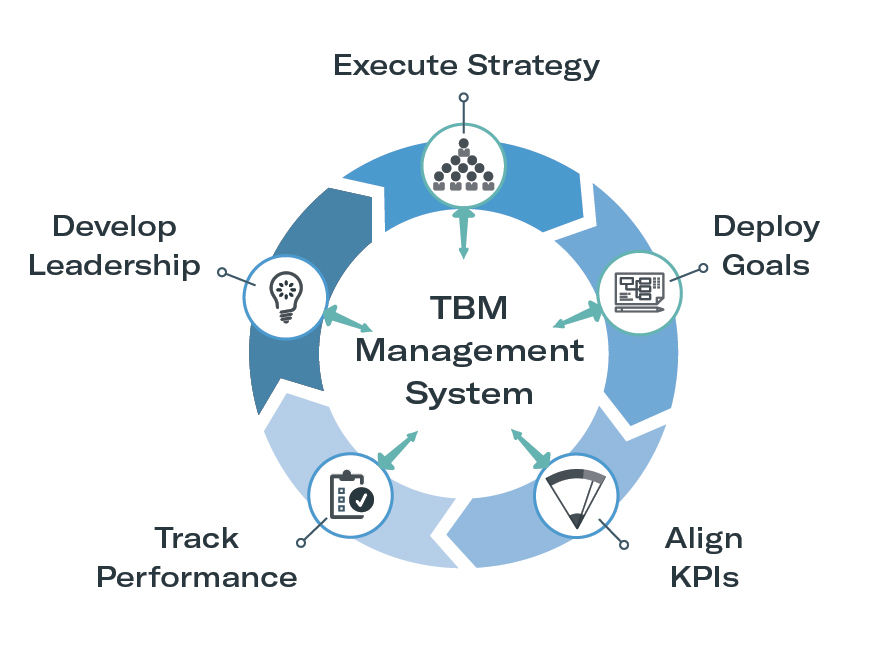Are you looking to streamline your business operations? Do you want to make sure your management system is up-to-date and efficient? Then this blog post is for you! We’ll show you how to implement a management system solution in your business so that you can take it from good to great. Plus, we’ll provide some tips on how to get the most out of your new system!
Establish Your Project Team
Project-driven organizations face unique challenges when it comes to managing and coordinating their projects. To overcome these challenges, it is important to set up a management system solution that can be easily accessed by all team members.
In this article, we will discuss the different steps that must be taken to create a management system solution for your business. First, you must establish a project team. This team will be responsible for executing the project and ensuring that all deliverables are completed on time. Next, you must delegate tasks to the project team members and reward them for their hard work. Finally, you must manage internal conflicts and ensure that all team members are working towards the same goals. By following these steps, you will be able to successfully implement a management system solution for your business.
Assign Roles and Responsibilities
When it comes to implementing a management system solution in your business, it is important to assign roles and responsibilities to everyone involved. This will help to ensure that the project goes smoothly and that everyone is accountable for their part in the project.
To begin, you must believe that you do not have to tolerate GWC issues in your program. Until you believe that, nothing will change.
Next, you must designate a lead person or team of people who will be responsible for overseeing the overall project. This role will be responsible for developing and implementing the project plan, coordinating with team members, and monitoring and managing the project.
Once the lead person or team has been assigned, it is important to assign roles and responsibilities to everyone involved. This will help to balance the technical knowledge of the team members with the business knowledge of the lead person or team. The roles and responsibilities listed below are just a few examples of what could be assigned:
-Technical lead: Responsible for developing and implementing the project plan, coordinating with team members, and monitoring and managing the project. May also be responsible for developing and maintaining the system specifications.
-Business analyst: Provides input into the project plan and helps to determine which aspects of the solution are best suited for the company’s needs. May also be responsible for developing system specifications.
-System administrator: Maintains system security and performance, responds to user requests, and coordinates system upgrades.
-Database administrator: Administrates databases and oversees data backup procedures.
-Software engineer: Designs, builds, tests, and maintains application software.
Once all roles and responsibilities have been assigned, it is important to create a timeline for the project and track progress regularly. This will help to ensure that deadlines are met and that everyone is aware of where the project stands.
By following these steps, you can successfully implement a management system solution in your business.
Create and Manage a Project Plan
Project planning is one of the most important steps in successfully implementing a management system solution in your business. By following these six steps, you can create a project plan that leads your team with confidence through every stage of the project.
1. Set measurable objectives
First, set measurable objectives for the project. This will help you track progress and make sure you are reaching your goals.
2. Identify deliverables
Next, identify the deliverables required for the project. This will help you determine who will be responsible for creating and delivering each item.
3. Schedule tasks
schedule tasks so that they are completed in an appropriate timeframe. This will help avoid delays and keep your team on track.
4. Plan for contingencies
plan for possible setbacks and contingencies, and make sure you have enough resources available to handle them. This will minimize the impact of any unexpected issues on your project.
5. Monitor and review progress
regularly monitor and review the progress of the project to make sure it is on track. This will ensure that you stay accountable for your goals and objectives.
6. Celebrate success!
when the project is completed, take time to celebrate your success! This will ensure that everyone involved in the project is satisfied with the results.
Select the Best Option for Your Organization
When it comes to selecting the best management system solution for your business, there are a few things to consider. First and foremost, you need to decide what type of system you need. There are three main options: enterprise performance reporting system (EPRS), software as a service (SaaS), or a hybrid model. EPRS is the best option, but it is not required. SaaS is the next best option, and it is a cloud-based platform that you can access from anywhere. Finally, a hybrid model combines elements of EPRS and SaaS. It is the most versatile option, but it may not be the best for your specific needs.
Once you have decided on the type of system you need, you need to decide on a project team. Your project team will consist of individuals with the necessary skills and knowledge to implement and manage your management system solution. You should also assign roles and responsibilities to your project team members so that everyone understands their role in the project. Finally, create an implementation plan and timeline so that everything moves along smoothly.
By following these simple steps, you can implement a management system solution in your business successfully.
Develop Well-Defined and Understood Performance Metrics
When it comes to developing and implementing a management system solution in your business, it is important to first understand what performance metrics should be defined and understood. A good starting point is to use the Balanced Scorecard Institute’s (BSI) Measure-Perform-Review-Adapt (MPRA) framework and tested approach for developing and implementing a KPI system.
Once the appropriate performance metrics have been defined, it is important to ensure that they are well-understood by all involved in the business. This can be accomplished by creating a transparent reporting process that allows for easy interpretation of data. In addition, periodic reviews of the performance metrics should help to ensure that all necessary elements of the business are being measured and managed effectively.
By following these simple steps, you can pave the road to success in your business management system solution.
Involve Employees in the Project
There are many benefits to involving your employees in the project of implementing a management system solution. Not only will they be more engaged in the process, but they will also be able to provide valuable input and feedback. Additionally,management system solutions can be complex, and having a team of employees who understand the ins and outs of the system will make the transition smoother.
To get the most out of this process, there are a few things that you need to do. First, you must explain the need for the change and make sure that everyone understands what it is that you’re trying to achieve. Next, create a timeline for the project and ensure that all team members are included. Finally, make sure that communication is key throughout the entire process. By following these tips, you can ensure that your employees are involved in the project and get the most out of it.
Choose a Graphical Business Management System
When it comes to finding the best business management system for your business, you have a few options to choose from. You can either choose a graphical solution, which is easy to use and can be implemented by external consultants or teams, or you can choose a software-as-a-service solution, which is more budget-friendly.
The best graphical business management systems solve your biggest frustrations by providing you with all the technological solutions you need in one place. They also allow you to easily track your business’ performance and keep all your documentation in one place. Zoho One is a wholesome business management system that has everything you need to run your business on the operating system. It’s also free to use for up to 10 users.
Implement in Stages
There are a few stages that must be followed when implementing a management system solution in your business. The first stage is to market your business more effectively. This means developing a plan to increase sales and marketing activity. You must also manage growth more effectively. This includes planning for the future and budgeting for costs associated with growth. Additionally, you must document your business processes and ensure that all stakeholders are aware of system changes. Finally, you must correct any issues that arise during the system implementation process to ensure a successful outcome.
Test and Evaluate Performance
One of the most important steps in implementing a new performance management system is testing it first. By testing the system, you can ensure that it is effective and that any adjustments or revisions can be made as needed. Here are five tips for testing a new performance management system:
1. Create a project team. This team will be responsible for carrying out the testing process and making any necessary adjustments to the system.
2. Prepare the ground. Before testing begins, make sure all the necessary resources are available (e.g., data, tools, etc.) so that the testing process can be as thorough as possible.
3. Set realistic expectations. Make sure testers understand what they are expected to achieve during the testing process and set realistic expectations for results.
4. Be flexible. The test process may not go as planned, and that is okay. Do not get bogged down in details; instead, adapt the system as needed in order to continue the test process.
5. Let the testing process play out naturally. Don’t try to force a perfect outcome; let the system “run its course.” After the testing is complete, you will have a better understanding of how the system works and what needs to be improved or updated.
Track Your Success and Make Adjustments as Needed
Everyone knows that a good performance system is essential for managing a successful business. However, many businesses find it difficult to implement a performance system due to the time and resources required. If you are looking to improve your performance management system, here are 10 tips to follow.
1.Start by understanding your business goals. What do you want to achieve? Once you have a clear vision for the future, it is easier to develop a plan of action.
2.Create an action plan. When you have a goal, it is important to have a plan of how you are going to get there. This plan will include specific tasks and timelines, as well as resources necessary to achieve your goal.
3.Define the key performance indicators (KPIs). After you have created your action plan, it is time to measure the success of your efforts. You can do this by defining and tracking KPIs.
4.Make adjustments as needed. As you track and measure your progress, you will likely find that some adjustments need to be made. Make these changes quickly and without delay, so that you can continue moving forward in the direction of your goal.
5.Communicate with everyone involved in your business. With a performance system in place, it is important to communicate with all involved parties- from the CEO down to the front-line employees. This communication will help everyone understand the goals of the company and ensure that everyone is working towards the same goal.
6.Measure and track progress every day. Adopting a performance system doesn’t mean that you should stop monitoring your business performance every day. Instead, use tracking tools to measure progress more accurately and frequently. This will help you make quick and accurate adjustments to your action plan as needed.
7.Be patient with success. A successful performance system takes time and effort to implement properly. Be patient with yourself






















